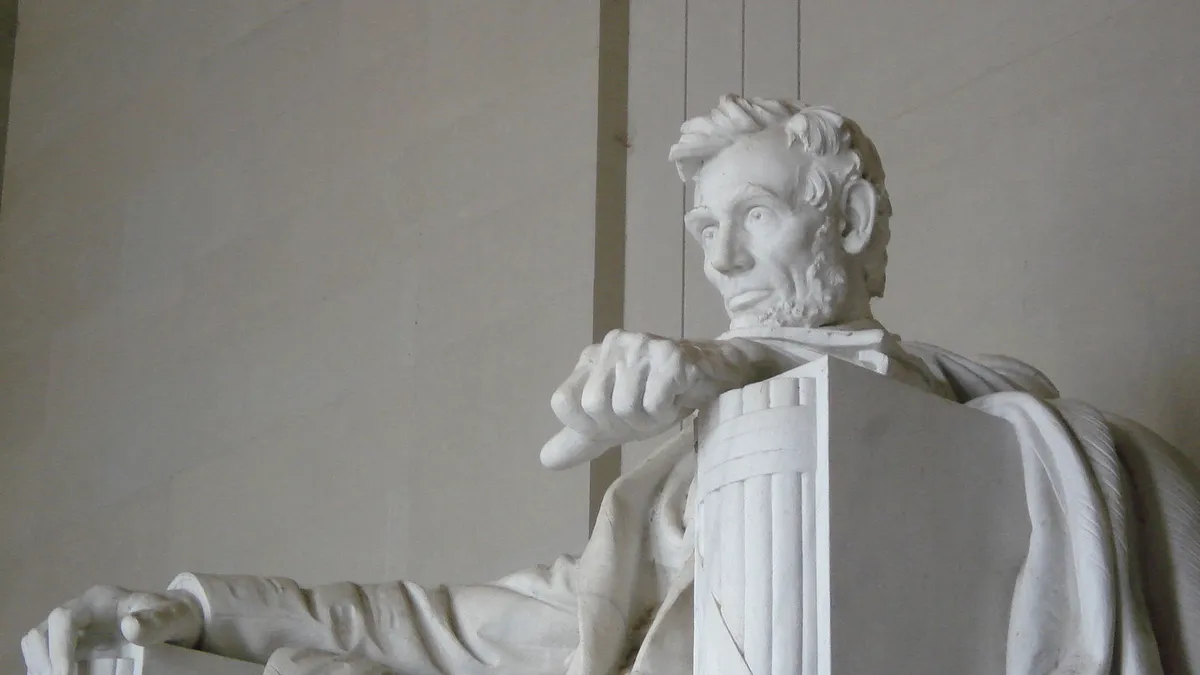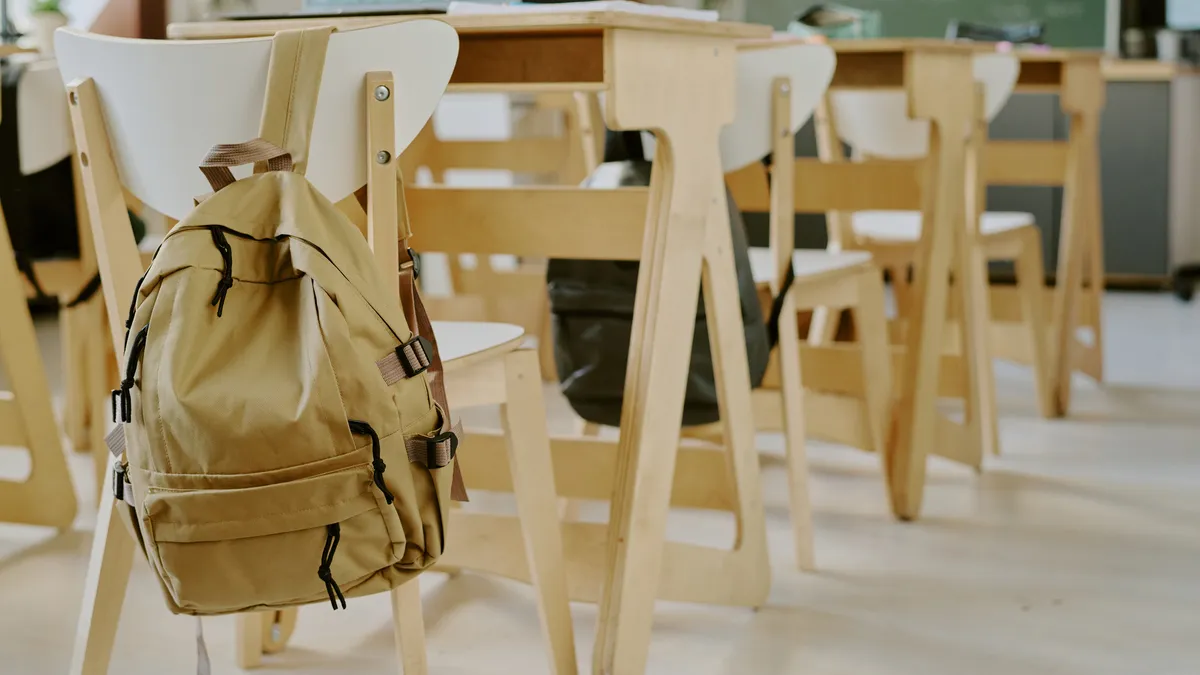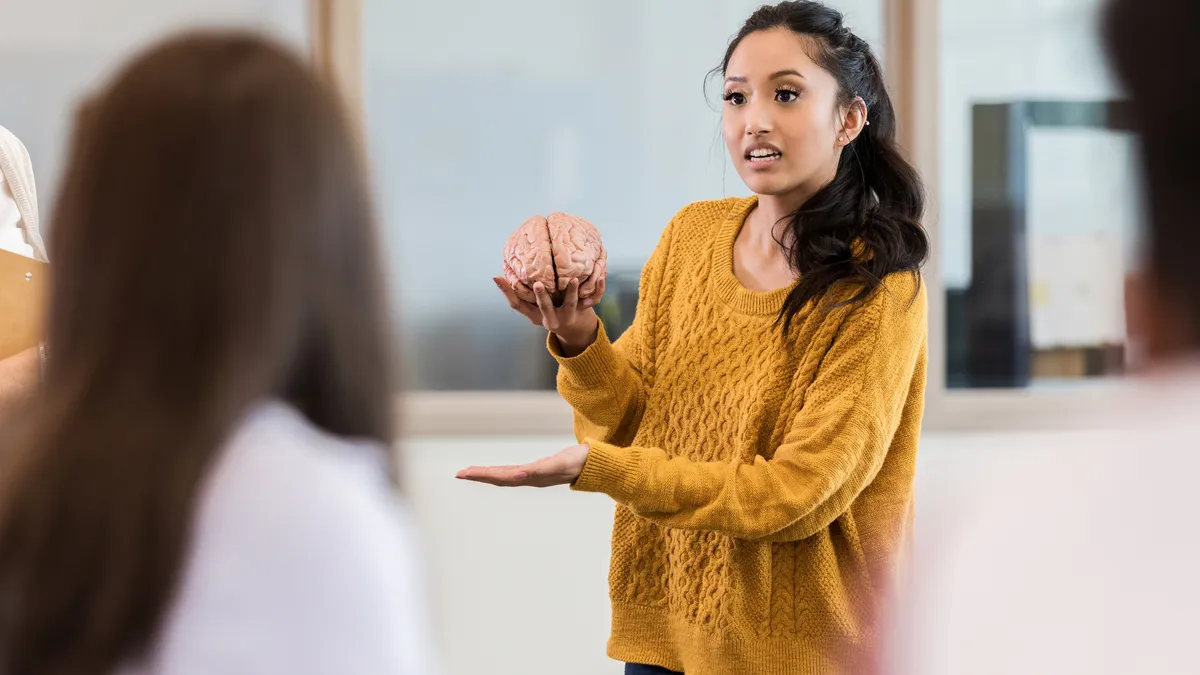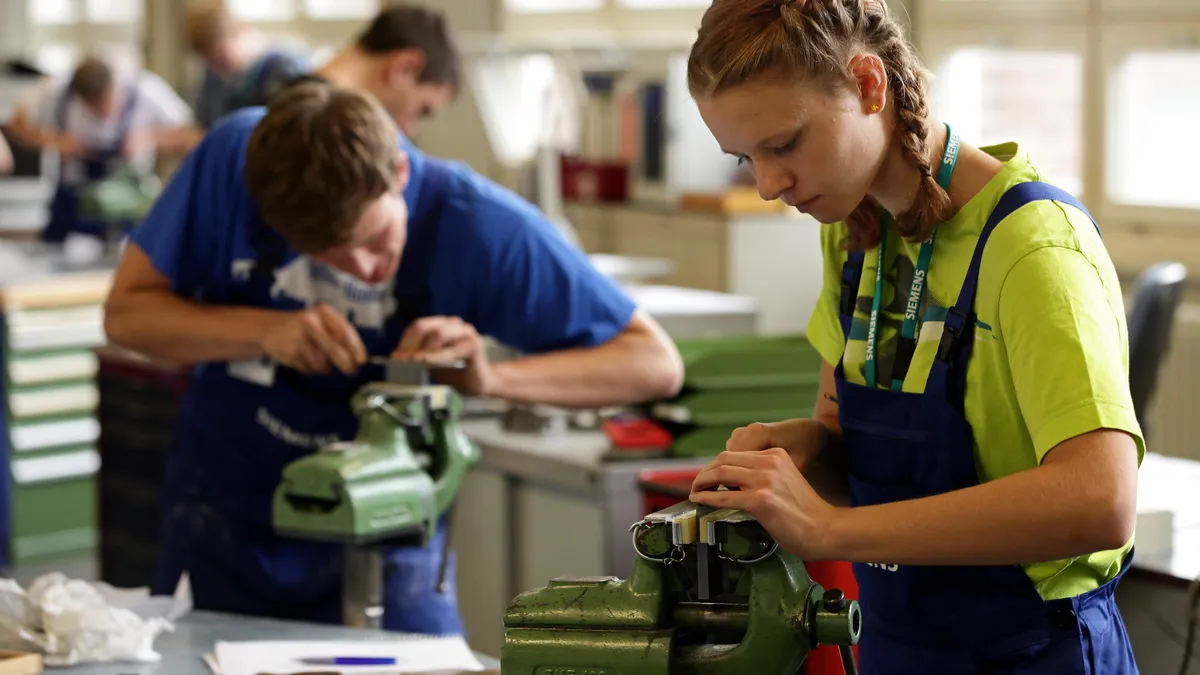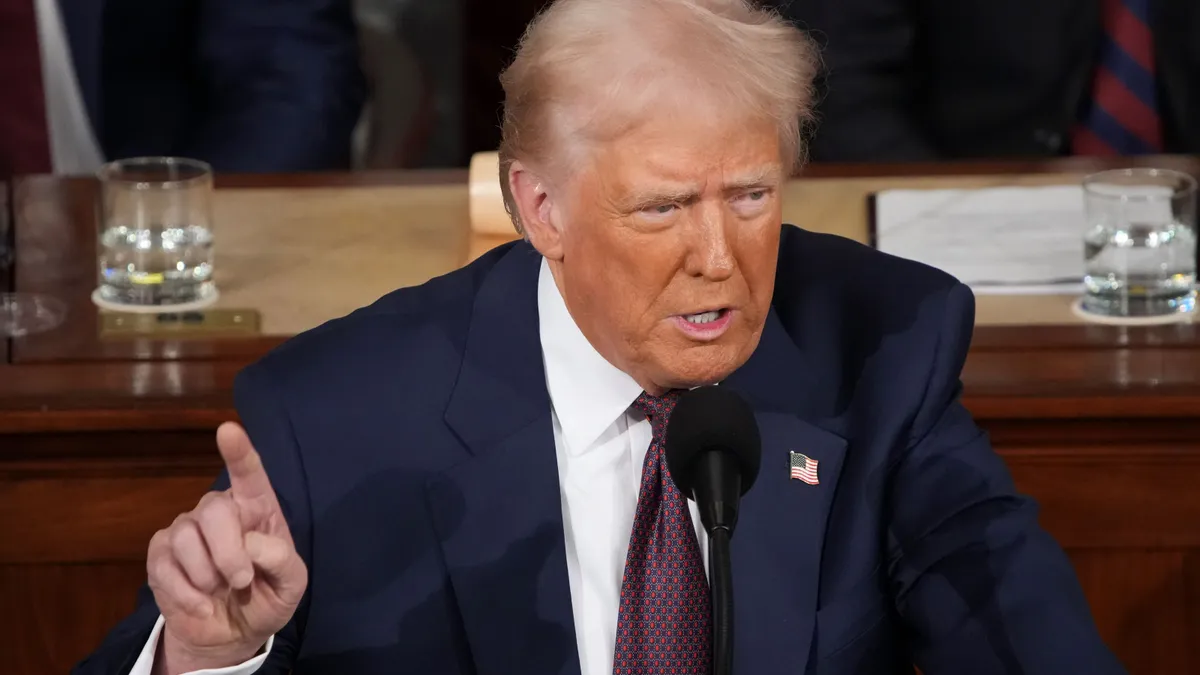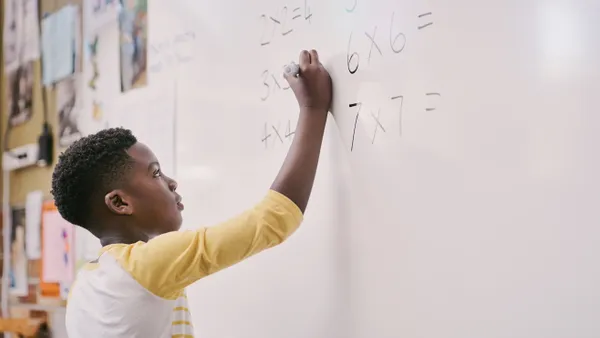To National Council for the Social Studies President Stefanie Wager, the upcoming presidential inauguration is one significant enough to bring up in any classroom. From the historical elements of the day to the speech itself, there are multiple angles for educators to work the event into curriculum, including the symbolism of the ceremony itself.
“It is significant that our tradition is to have the current president at the inauguration so there's a peaceful transition of power,” said Wager, via email. “This is not always the case in other countries.”
Education experts who spoke with K-12 Dive agree this year’s Inauguration Day ceremony, as well as the events leading into it, will likely differ from those that have taken place historically. That presents many ways to tie the event not only into civics and U.S. history classes, but across curriculum and grade levels, too.
Tap into history, ritual and even math
Wager believes teachers of any grade and subject can offer age-appropriate lessons on the ritual of Inauguration Day, as well as what the ceremony stands for in ushering in a new president and a shift in power. Whether it’s an early elementary class or a 12th-grade course, content can be scaled for each grade level to look at historical and current events, including and in the context of the inauguration.
“In addition, as I work with teachers, I always tell them standards are a ‘floor’ and shouldn’t limit their ability to engage students in the world around them,” she said. “Something like the inauguration, which only happens every four years, should be taught.”
Even math classes can use the event for a lesson, studying the economics of the ceremony and examining what taxpayers pay as opposed to what committees have to cover through fundraising, notes Wager.
Charles N. Quigley, a senior consultant and founding executive director emeritus of the Center for Civic Education, also sees the event as a possible math lesson, with students looking at the numbers of people who have to leave or start new jobs — and even physically move from the district — right around the inauguration itself.
“The transition involves literally thousands of people in Washington, D.C., moving, with thrift shops loaded with merchandise, as they move out of their offices and even leave the city,” Quigley said. “It’s a math question.”
Educators can also use the inauguration as a way to teach students about the political process, helping classes understand how the electoral college works and how presidents are voted into office, noted Natalia Mehlman-Petrzela, an associate professor of history at The New School and co-host of the weekly podcast "Past Present." The podcast takes a look at the history behind current and cultural events.
“Even for very young children who know little about politics, however, it could be useful to familiarize students with this civic custom,” Mehlman-Petrzela said in an email. “The more familiar students become with the political system, the more they can engage in sophisticated critical analysis of this — and any — event.”
Parse through the language
The inauguration speech itself also presents cross-curricular opportunities, particularly for English language arts educators. Students can be asked to parse through the words spoken, or analyze the speech through the perspective of the ethos, pathos and logos of the rhetorical triangle. They can also study the emotions the speech is trying to convey, as well as the issues of value and ethics it raises, said Laura Tavares, program director for organizational learning and thought leadership at Facing History and Ourselves.
“These speeches are trying to persuade the listener,” she said. “And 'How is Biden going about that?' would be an interesting ELA point.”
Daisy Martin, founding director for The History & Civics Project at the University of California Santa Cruz, added that educators can also have students look at the Constitution and examine what it says about the event.
“Younger students might consider the ceremony of it and what that ceremony means or consider the word ‘inauguration’ and what it means in this context,” Martin said in an email.
Martin added educators could also ask students to analyze the language around the oath of office, as well as the words spoken by the incoming president and how they connect to democratic principles, the rule of law, constitutional supremacy and even the idea of public service. Classes could also look at past speeches and even poems around the inauguration.
“There are lots of ways to bring this event into the classroom in meaningful and important ways,” she said. “I think questions and lessons around democracy and significance are especially well-suited — many of us will be teary-eyed watching the first Black woman to take executive office — and this is not the only first.”
It’s OK to talk about the politics
Finally, while Inauguration Day happens every four years, Tavares believes it is important to note the months leading into this year’s ceremony have been different from previous years. Most notably, months of deep political divisiveness and rhetoric alleging the 2020 election was "stolen" led to a Jan. 6 insurrection in which a mob of Trump supporters stormed the U.S. Capitol in an attempt to disrupt the certification of electoral votes, resulting in five deaths.
“I do think it’s important for teachers to acknowledge with students that this has not been a typical process,” she said. “I think it’s an opportunity for a good look at what is the health of our democracy.”
To Tavares, this may mean talking with students about how some people may be celebrating this year’s inauguration while some may not. Teachers could ask students to look at what makes a democracy work, the role of the rule of law, and disagreement that takes place in civic forums and even in the media in the U.S.
Tavares added the event also provides an avenue into media literacy lessons, asking students to parse through how information has been conveyed in the past several months and examine the sourcing for that information, as well. She points to the RAND Corporation’s recent “Countering Truth Decay” project as a good source for examining what happens when people do not have a shared truth.
Ultimately, Tavares believes the inauguration provides an opportunity to highlight not only the importance of staying informed around issues of civics and current events, but to also help students learn how to do so.
“This is a opportunity in the classroom for talking about how to use their voices, to stay engaged and their responsibility,” she said. “The responsibility for living a civic life is about staying informed.”


